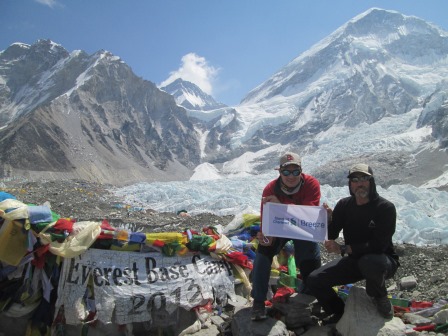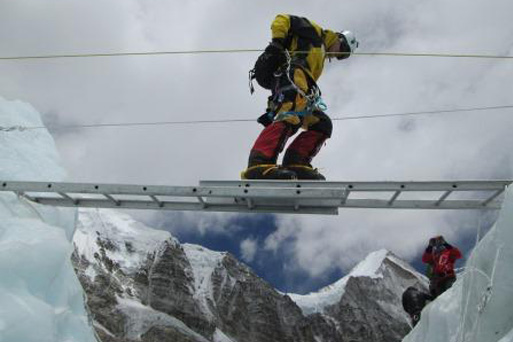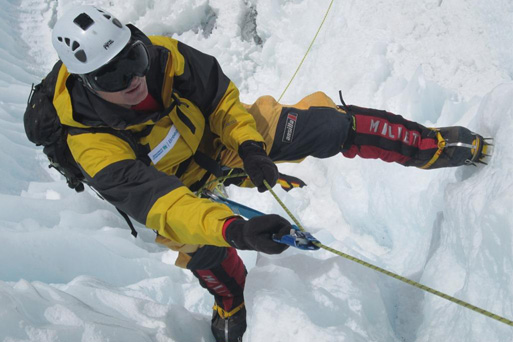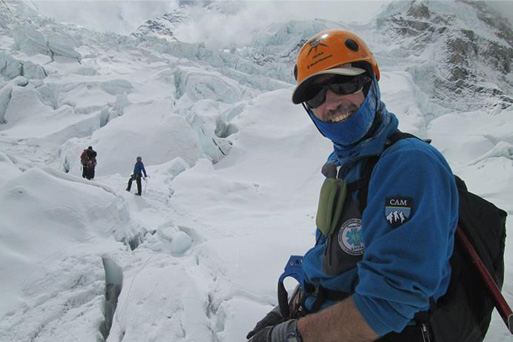At 5,364 metres (17,600 feet) above sea level, Everest Base Camp in Nepal is already higher than the peak of most mountains. The available oxygen is already half that at sea level, making even daily tasks can be tiring – an apt warning of the dangers of altitude sickness and the need for acclimatisation. But mountaineers still keep fit while they wait for their chance to climb Everest, with a regime of calisthenics, climbing and – perhaps appropriately for Base Camp – baseball.

Base Camp is also the last bastion of civilisation for those attempting Everest. Just beyond the safety of the tents and the comfort of freshly cooked food lies the treacherous Khumbu Icefall; the ever-changing, ever-moving head of the Khumbu Glacier. The Icefall is perhaps the second most dangerous part of the climb, after the hypoxic route to the summit.
Early pioneers did not think it a viable route. George Mallory, the first explorer of Everest, wrote that he "did not much fancy it would be possible", and in 1952, Swiss mountaineer Andre Roch referred to the Khumbu Icefall as the "Suicide Passage". Ironically, the Icefall is now the first step of any expedition from Nepal.
The Khumbu Icefall
An icefall, as its name implies, is the part of a glacier that flows over a steep mountainside like a frozen waterfall of ice. The glacier flows so fast over the steep rock that cracks appear in its upper layer, forming crevasses and giant towers of ice called seracs. And on a mountain the size of Everest, the seracs are the height of buildings, and the crevasses are so deep you can’t see the bottom.

The Khumbu Icefall is in a permanent state of flux. Just a few hundred metres from the safety of Base Camp, cracks can open up without warning, and avalanches rage across the mountain. Building-sized seracs of ice can topple at a moment’s notice, and there is nowhere to take shelter. To cross the Icefall, the Horacios are relying on a simple piece of technology: aluminum ladders, strung together across the rickety towers and bottomless pits of this ever-shifting maze of ice. The glacier moves as much as three feet a day, and is best climbed at night; during the day, the sun's warmth melts the ice, making this passage even more dangerous.

Round and Round We Go
On a mountain as tall as Everest, climbers have to move up slowly, acclimatising as they go, with a rotation system that has them climbing progressively higher but constantly returning back to base camp to rest. Even for mountaineers as seasoned as the Horacios, it can take thirty days of acclimatisation before they are ready for a summit push. As a result, Everest climbers have to go through the Icefall as many as six or seven times before they can reach the top of the mountain - and due to the constant shifting of the glacier, every approach will be completely different.

We wish the Horacios the best of luck as they navigate this dangerous part of the journey. But so far, it looks like they’re enjoying themselves.
